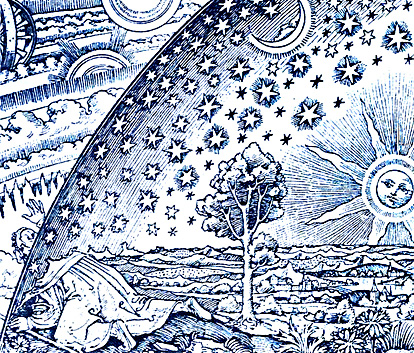
 The
problem of weltanschauung, or worldview (world view) is analytical, as a construct of the mind in relation to reality, this construct must be reliable if not fully accurate.
The
problem of weltanschauung, or worldview (world view) is analytical, as a construct of the mind in relation to reality, this construct must be reliable if not fully accurate.
Such a construct as this that deals with a differences between the real and the
perceived to be, is a problem because by encompassing beliefs and observations all observers are prone to errors. In 1918, Sigmund Freud warned against that "truth cannot be tolerant" with regard to poorly constructed worldviews.
worldview![]()
"The universe is not only queerer than we suppose, it is queerer than we can suppose."
"It is inadmissible to declare that science is one field of human intellectual activity, and that religion and philosophy are others, at least as valuable, and that science has no business to interfere with the other two, that they all have an equal claim to truth, and that everyone is free to choose whence he shall draw his convictions and in what he shall place his belief. Such an attitude is considered particularly respectable, tolerant, broad-minded and free from narrow prejudices. Unfortunately it is not tenable; it shares all the pernicious qualities of an entirely unscientific Weltanschauung and in practice comes to much the same thing. The bare fact is that truth cannot be tolerant and cannot admit compromise or limitations, that scientific research looks on the whole field of human activity as its own, and must adopt an uncompromisingly critical attitude towards any other power that seeks to usurp any part of its province....
Of the three forces which can dispute the position of science, religion alone is a really serious enemy. Art is almost always harmless and beneficent, it does not seek to be anything else but an illusion. Save in the case of a few people who are, one might say, obsessed by art, it never dares to make any attacks on the realm of reality. Philosophy is not opposed to science, it behaves itself as if it were a science, and to a certain extent it makes use of the same methods; but it parts company with science, in that it clings to the illusion that it can produce a complete and coherent picture of the universe...
Sigmund Freud Civilization and Die Weltanschauung, 1918
A translation of the German word, weltanschauung: [ welt = world + anschauung = view, opinion, ]
1.
The overall perspective, image, or picture
from which one sees and interprets the world.
2.
a collection of beliefs or opinions
about life and the universe, held by any person or society of people, the individual's worldview is usually reinforced by their group's views.
√ The belief or opinion one possesses about the condition of existence.
What do you see in the black and white graphic to the above right?
American
Heritage Dictionary
(Boston, Mass.: Houghton Mifflin Corp., 2002), page 1580
Interpretation:
The objective and subjective acts of perceiving the world are contrasted and compared for the sake of clarifying errors --or elucidating follies-- in how reality is identified and explained.
Sources of divergent opinions.
Every person compares what they see and know to other people's views.
personal (ego)
social (group)
rubric biotic inorganic Eigenwelt Mitwelt Umwelt 
How do we see what we perceive as real?
The description or analysis that uses the concept of a world view is a methodological means of understanding an underlying tension between opinions and facts;
or a difference, often inherent in any age, to account for individual’s beliefs or opinions about what is know during that period in history.
For example, Herodotus in ancient Greece had opinions, based on his society and learning, he described the Scythians of what is today the Ukraine as barbarians and insisted that culture is shaped by geography.
Depicting the object in relation to its actual scale and parts to the whole. Albrecht Dürer, sketch on paper.
Two opposing views of the world may clash. In 150 CE Claudius Ptolemy in Alexandria published this map of the world. In 1544 CE Battista Agnesi published this map in Venice after Magellan's crew returned. Newberry Library Library of Congress. What are the differences between the ancient and the modern view of the earth?
Ptolemy's world,
Magellan's world,
What is the difference and how would you describe that difference?
Are one of these people correct, and another incorrect?
Or, are there degrees of being correct, where these two sources 1200 years apart, diverge with respect to accurately depicting a map of the Earth?
To answer these questions historically, you must employ the idea of weltanschauung, or world view because human knowledge is a distortion of the actual conditions people describe often emphatically insisting that these are an accurate rendering of their world.
Similar concepts: the known world, reality, worldwide, worldly, actual world, existence, conditions, preternatural
Concepts | Methods | Measure of accuracy | Basic vocabulary | historically | Maps | Brief
Lesson:
Humans are prone to errors in perception, understanding and conceptualization so that some means is needed to interpret past mistakes in light of subsequent revelations to the contrary.

Four Apostles by Albrecht Dürer, oil on wood, 1526. Artothek Alte Pinakothek, Munich.
The painter may have been suggesting the four humors as embodied in the religious motif of the four apostles: John, Peter, Mark and Paul. In the foreground are the two men that appealed most to Martin Luther who had sparked a rebellion against the Roman Catholic Church with the Protestant reformation. John is reading his opening lines of the book of Genesis to Peter. The painted words warn against false prophets. As Martin Kemp – the critic and art historian – suggests that "Dčrer was fully conversant with such theories and embodied them in a number of his prints, but their most complete expression is in the two magnificent panels of the Four Apostles that the ageing artist presented as his own 'memorial' to his home city of Nuremberg . . . . each apostle embodied a specific temperament."
J.B.S. Haldane, Possible Worlds and Other Papers (1927), p. 286
Smarthistory; Kahn Academy, a short film discussing this work in the Alte Pinakothek, Munich.
Martin Kemp. Visualizations: The Nature Book of Art and Science, U. of California Press, 2000. pp. 14-15.
Aristotle | Galileo | Bacon | Hooke & Newton | Darwin | Einstein & Bohr | Bachelard | Keller | Bateson | Thomas
Simple definition of worldview is worldvu.htm. | Detailed look at worldview concept: worldviews.html
Seven Lessons about worldviews is at worldview7.html | An example of getting it wrong: worldviews.html#Meaning
Visualization | Rules for visualizing | Anatomy of vision